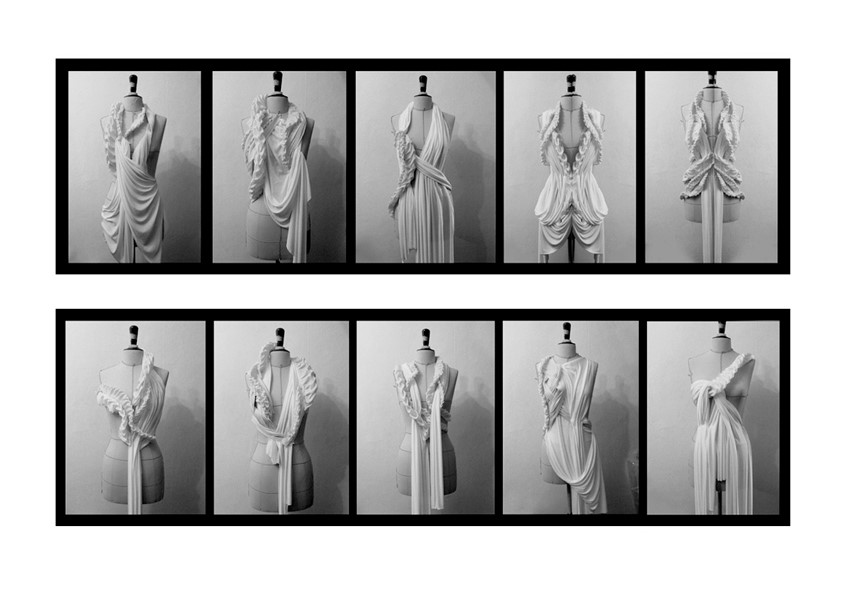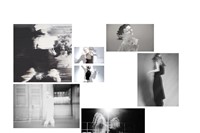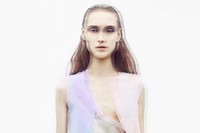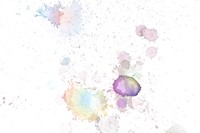Since graduating from ESMOD Paris in June 2010, Shanshan Ruan has been carefully cultivating the many skills needed to navigate the fashion scene...
Since graduating from ESMOD Paris in June 2010, Shanshan Ruan has been carefully cultivating her skills, serving studio assistant at the young couturier Alexis Mabille’s namesake house, styling for Anne Valérie Hash and working for quintessential Parisian boutique L’Eclaireur.
At ESMOD, Ruan specialised in 'Nouvelle Couture', an influence that proves prominent in her work. Her very first pieces – dramatically sculpted dresses – were created using the tried and tested techniques of draping. Her second collection, which she will debut as a finalist at the 28th edition of Hyères at the end of April, maintains that couture sense of accuracy, but now applies it to ethereal fabrics and modern cuts.
As Ruan prepares for the Hyères fashion competition Villa Noailles, she reveals to AnOther what inspires her, how her illustrations and paintings tie in with her work and her creative journey so far.
What made you want to take part in Villa Noailles at Hyères?
I always had the feeling that the current fashion industry is no longer how it used to be in the 20s, or the 60s and 70s when creativity was enchanted and designers were more like artists. I think people valued uniqueness more then, all kinds of crazy stuff were more accepted. Today's fashion is much more uniform. It's an unfortunate, thing but everybody has to accept it and make compromises in order to participate in the market. So, before I join this system, which is going to happen anyway, I really wanted to do something for myself first. Hyères is a place that allows everyone to have their own voice. There is no theme; there is space for all kinds of designs, styles and aesthetics.
What inspired this collection?
It all started with the film Pina. It was only in theatres for three weeks and every important cinema in Paris had already stopped showing it. I found a small cinema next to the Marais with only 47 seats, where I could watch it. It was astonishingly beautiful. When I came out of that dark cinema, it was bright and shiny and calm outside – the beginning of the Paris summer. All the images were flashing by again and again in my head when I slowly walked back home. That went on for a few days until all the images made sense to me. I can no longer indicate a single one, all that remained were movements, merging colors, blurred shapes. Then the idea came to me to frame those changing moments.
"I want this to be a finely-made collection that is completely mine, a form of self-expression in which I don’t need to compromise"
This is your second collection. What’s the evolution compared to your first work?
For my first collection the clothes were all in quite different styles so I can hardly call them a "collection". It was my graduate collection, and at that time I was very fond of Ann Demeulemeester, Sharon Wauchob and Peachoo Krejberg. My talented Japanese friends whom I met at ESMOD influenced me incredibly too. My sketches of that time showed a completely different style. Now I appreciate simpler things, less aggressive, more feminine, clean but not plain. I cannot tell why that is and how exactly that happened, but I think I've changed and change is always a good thing.
Your illustrations share the more fragile feel of your Hyères collection. How does your graphic work inform your fashion design?
I took painting lessons as a hobby while I was still in China. When I started studying fashion, my drawing skills helped me a great deal at the beginning. But I soon discovered that between 2D and 3D there is a big difference. I stopped sketching for a while, and just focused on cutting fabrics and work on the bust directly. At that time, illustration became something completely separate. Now, I try to combine the two techniques. 'Moulage' gives me the first idea about volume, shape and draping, the reaction of a specific fabric; while illustration on PC helps me to see the possibilities of colours, how it can match the pieces and the styling.
So, does fashion has a different expressive value for you?
I think fashion expresses things in a very different way. One of my friends told me fashion designers aren't artists but artisans. I quite agree.
How have your internships at Anne Valérie Hash and Alexis Mabille shaped your own style?
At Alexis Mabille I wasn't designing at all but I learnt to be precise. Since it's a haute-couture house, everything needs to be perfect. I still remember how my Japanese tutor went mad because I had sewn a seam 2mm too big. It was really hard, but thanks to them I acquired a sense of quality. At Anne Valérie Hash I was in a studio for the first time. We always worked as a group and had meetings discussing the collection constantly. Here I learnt to find a balance between the original sketch and the integrity of the whole line and the commercial needs.
What do you hope to achieve at Hyères?
Nothing big. I want this to be a finely-made collection that is completely mine, a form of self-expression in which I don’t need to compromise. And if I can reach an audience who appreciates my work, that would be really great.



